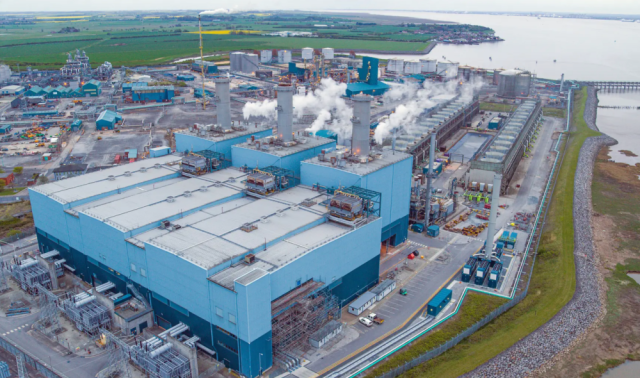
In a statement, Equinor said the company and partner SSE are starting preparations to use hydrogen in the Saltend Power Station, the key plant included in the purchase of Triton Power. (Source: Equinor ASA)
Equinor ASA and SSE Thermal will buy power company Triton Power as part of efforts to boost their contribution to the decarbonization in the U.K.
The companies, Norwegian oil company Equinor and British renewable power generator and network operator SSE, agreed to buy U.K.-based Triton on June 28 from private equity firm Energy Capital Partners for 341 million pounds (US$418.65 million). In a statement, Equinor said the pair are starting preparations to use hydrogen in the Saltend Power Station, the key plant included in the purchase of Triton Power.
“This acquisition together with SSE Thermal demonstrates our commitment to building a broad energy partnership with the U.K. We will continue to work to supply the U.K. market with reliable energy and to reduce emissions by offering a transition to hydrogen through our hydrogen project H2H Saltend. Contributing to flexible power supplies with low CO₂ emissions to support weather-dependent renewable energy is essential to ensure energy security through the energy transition,” Irene Rummelhoff, Equinor’s executive vice president for marketing, midstream and processing, commented in the company release.
Once the transaction is complete, Equinor and SSE Thermal will own Triton Power through a 50:50 joint venture. The deal is expected to close in September, subject to approval from the U.K. National Security Filing and EU Merger Control.
The acquisition of Triton Power strengthens Equinor and SSE Thermal’s portfolio of low carbon solutions in the U.K. This already includes plans for hydrogen power plants, hydrogen storage and conventional combined cycle gas turbine (CCGTs) with carbon capture and storage in Keadby and Peterhead, Scotland.
Saltend Power Station is a CCGT that uses natural gas with an installed capacity of 1.2 GW. The main role of this power plant today is to provide electricity during periods of low output from solar and wind.
Equinor and SSE Thermal are now starting work on preparing the power plant to use up to 30% hydrogen from 2027, with an ambition to eventually increase to 100% hydrogen operation. The hydrogen could come from Equinor’s H2H Saltend hydrogen project, which would reform natural gas into hydrogen by carbon capture and storage, capturing more than 95% of its CO₂ content. Saltend Power Station would then become an anchor customer for the hydrogen project.
With the purchase of Triton Power and subsequent addition of the Saltend Power Station, Equinor and SSE Thermal could thus begin to decarbonize flexible power generation and at the same time contribute to triggering production of low carbon hydrogen for industrial purposes as well, according to the company release.
“Flexible energy will be crucial as renewable energy scales up further over the coming years, providing important back-up and improving security of supply. But the real gain will be how we contribute to decarbonization in the longer term, and we are particularly excited about the possibilities for hydrogen and carbon capture in Saltend,” SSE Thermal CEO Catherine Raw commented. “Together with Equinor, we will explore all avenues to decarbonize Saltend and create new opportunities for other businesses so that they can operate in a future with net-zero emissions.”
In addition to providing flexible power to support variable generation from renewables, the H2H Saltend hydrogen project will also support industries to switch from coal to hydrogen. This includes factories that are part of the Saltend Chemicals Park, which already is supplied with electricity and steam from the Saltend Power Station, the company release said.
(US$1 = 0.8145 pounds)
Recommended Reading
Ohio Utica’s Ascent Resources Credit Rep Rises on Production, Cash Flow
2024-04-23 - Ascent Resources received a positive outlook from Fitch Ratings as the company has grown into Ohio’s No. 1 gas and No. 2 Utica oil producer, according to state data.
E&P Highlights: April 22, 2024
2024-04-22 - Here’s a roundup of the latest E&P headlines, including a standardization MoU and new contract awards.
Galp Seeks to Sell Stake in Namibia Oilfield After Discovery, Sources Say
2024-04-22 - Portuguese oil company Galp Energia has launched the sale of half of its stake in an exploration block offshore Namibia.
Aker BP’s Hanz Subsea Tieback Goes Onstream
2024-04-22 - AKER BP’s project marks the first time subsea production systems have been reused on the Norwegian Continental Shelf.



